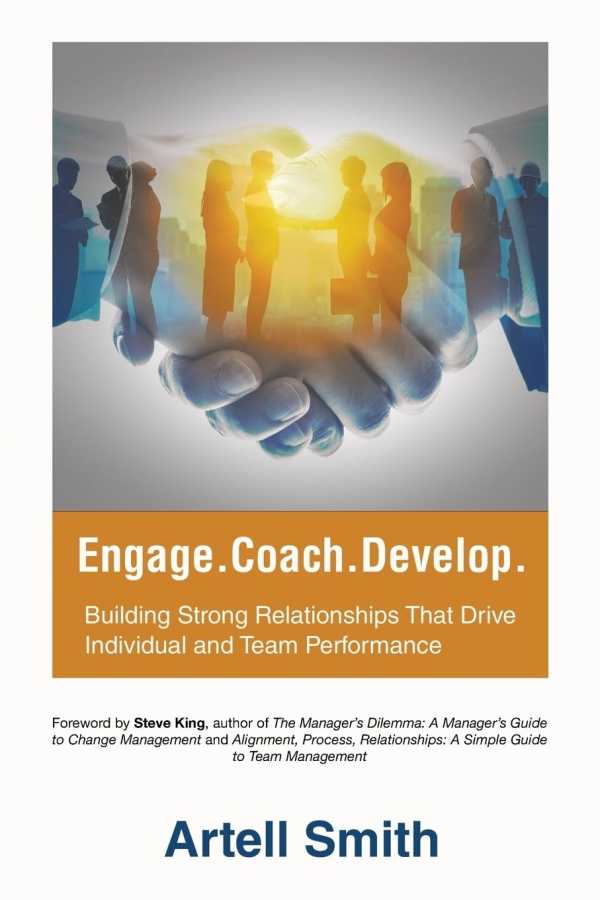Engage. Coach. Develop.
Building Strong Relationships That Drive Individual and Team Performance
Success is arrived at together, not alone, according to the succinct leadership book Engage. Coach. Develop.
Human resources professional Artell Smith’s concise but practical leadership book Engage. Coach. Develop. includes instructions for forging strong relationships with one’s employees to boost a business’s performance.
With tidy recommendations for building successful teams and guiding one’s employees, this is a book concerned with realizing a business’s full potential by taking advantage of individuals’ strengths. Its work is targeted toward managers at all levels and occupations, with field-tested tips for employee engagement, connection, and rewards. In turn, it promises that employees who are treated as it suggests will themselves attain a sense of professional fulfillment, winding up both happier and more productive.
Casual and conversational, the book dishes out anecdotes and dollops of humor that make its familiar advice more personable: Smith recalls a workplace interaction in which he was told that the company didn’t like smart alecks (“except she didn’t say aleck”); of a senior leader who once forbade the use of the word “feel,” he quips “I don’t think butter would have melted in [his] mouth.” Indeed, the book’s sympathy for those facing common workplace struggles is humanizing. Smith notes that most employee complaints related to managers are about managers being too critical, not acknowledging good work, and not listening, and he shares advice for avoiding these pitfalls by working to understand one’s employees better. The book’s leadership method is rooted in positivity and balanced by the keen acknowledgement of variables like employees’ emotional states.
Interaction models and diagnostic tools are included for greater context, alongside useful lists of tips, questions, and behaviors for mnemonic reinforcement. Encouragements to listen for potential, speak with intent, dance toward insight, and create new thinking are used to illuminate the nuances of employee interactions. The book’s suggestions for possible topics of conversation are expansive too.
Despite its compressed length, the book’s chapters run long and lose focus too often. Still, the basics of engagement, coaching, and development are handled in logical order, and the final chapter does an able job of synthesizing Smith’s insights (alongside the points of view of other authors, including Patrick Lencioni, Daniel Pink, and Steve King, who are referenced to increase credibility throughout, and whose expertise is reflected in the book’s lengthy bibliography).
The leadership guide Engage. Coach. Develop. draws on personal experiences to make suggestions for motivating one’s employees and maximizing success.
Reviewed by
Joseph S. Pete
Disclosure: This article is not an endorsement, but a review. The publisher of this book provided free copies of the book and paid a small fee to have their book reviewed by a professional reviewer. Foreword Reviews and Clarion Reviews make no guarantee that the publisher will receive a positive review. Foreword Magazine, Inc. is disclosing this in accordance with the Federal Trade Commission’s 16 CFR, Part 255.

